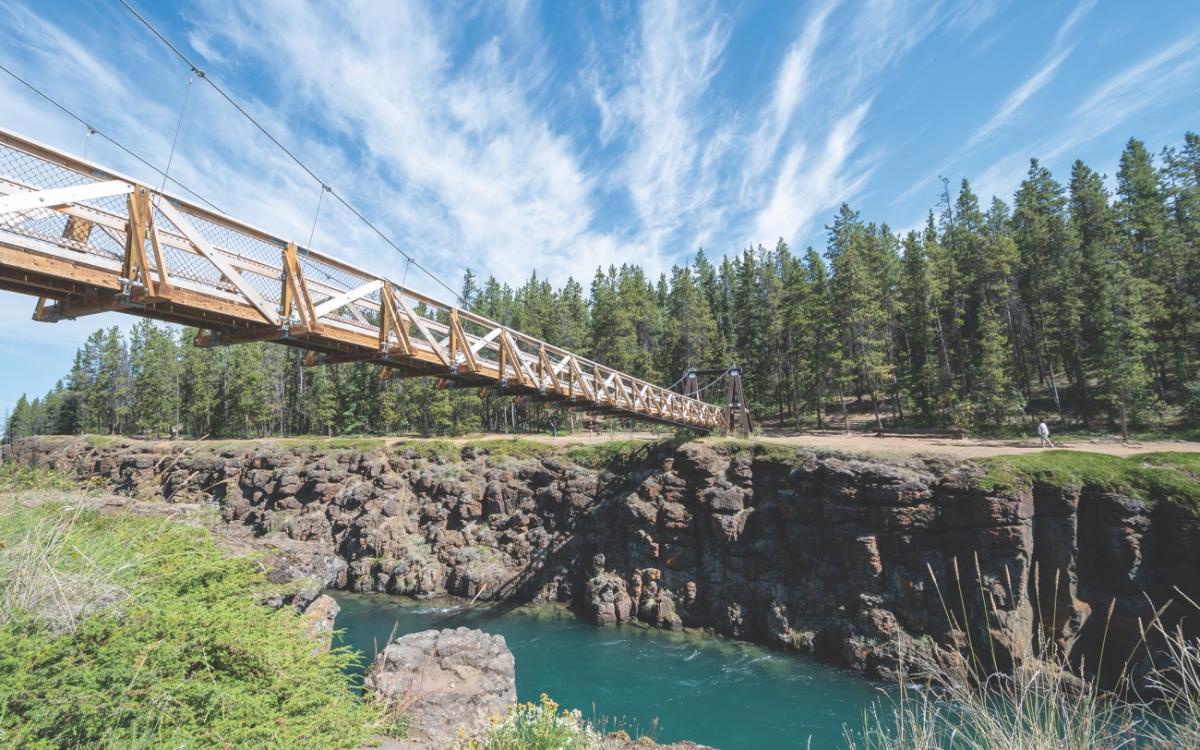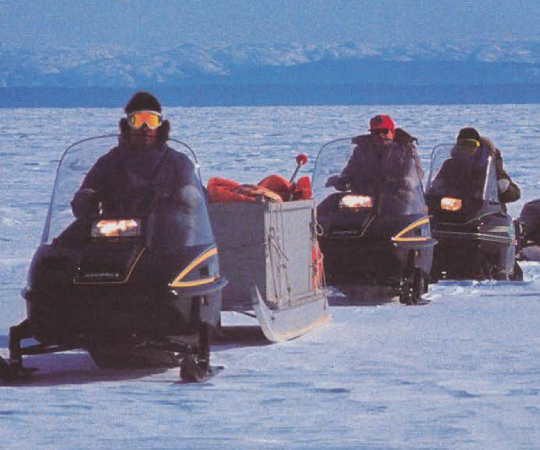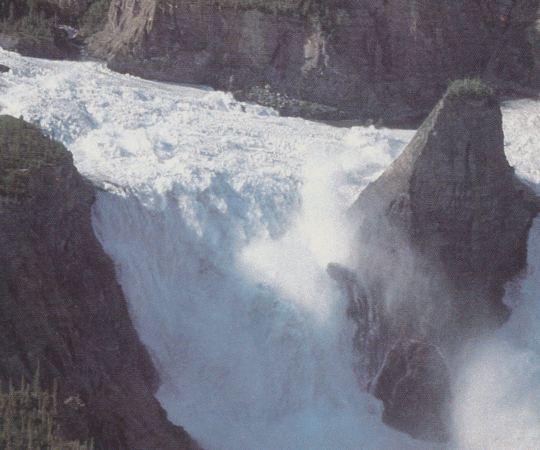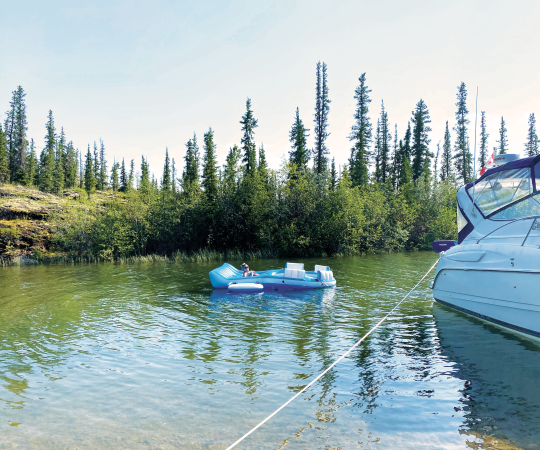Not too long ago, you were at the mercy of the seasons when trying to cross Northern rivers. Ferry services could be suspended due to high water and ice break-up in spring. Cold weather could make ferry runs impractical in the late fall and early winter freeze-up, putting an end to river commutes until ice crossings were safe.
But over the years, great steel bridges have gone up over many of the North’s waterways, connecting communities
and entire regions with the rest of Canada year-round—while simultaneously offering gorgeous views.
Here’s a look at some of the biggest and smallest bridges in the territories, and how they irrevocably changed life for the people they connected.
NWT
Deh Cho Bridge
1.045-kilometre span over the Mackenzie River, southeast
of Fort Providence
Claim to fame: The longest bridge North of 60
When construction of the Deh Cho Bridge was completed in 2012—connecting Yellowknife and Mackenzie River communities with the south, year-round—people from all over the NWT had to see it to believe it. Howard McKay was one of the hundreds of residents who braved -40C temperatures to celebrate the bridge’s opening on a late November day. “Seeing the bridge opening was like our world was opening up,” says McKay.
An employee with the government’s transportation department, he was granted the day off from work to witness the event. McKay drove the 3.5 or so hours down to Fort Providence from Yellowknife and marched across the bridge’s span. Fireworks went off that evening.
How the bridge changed life: The Deh Cho bridge replaced the MV Merv Hardie ferry that had previously crossed the river during the summer months. “There were a lot of people saying they would never have to worry about freeze-up and spring thaw again,” McKay says, explaining ice conditions on the river could sometimes make the ferry crossing unpredictable.
The bridge meant residents, visitors and truckers could cross the river at any time of year. Students returning to Yellowknife after their university or college terms ended in spring wouldn’t have to leave their vehicles in Hay River (to pick up weeks or months later) because the river ice crossing was closed, and the ferry wasn’t running yet. Produce shelves in northern communities would no longer go bare during break-up or freeze-up, when the ferry shut down.
While the $202 million project took four years to finish and was dogged by controversy throughout, it has undeniably changed life in the NWT capital—mostly for the better.
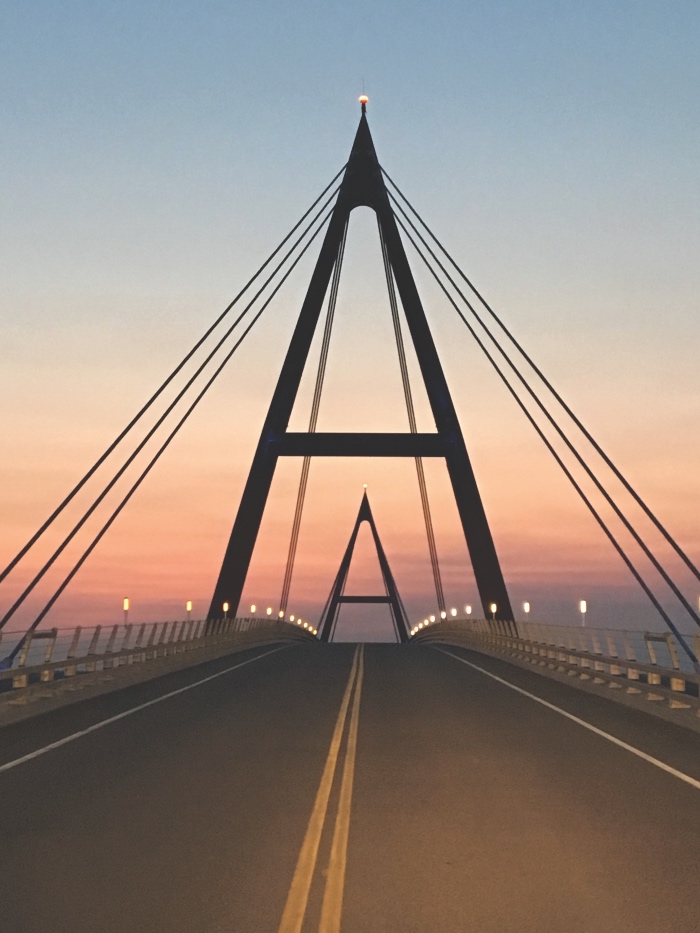
YUKON
Nisutlin Bay Bridge
584 metres long, crossing Teslin Lake at the narrowest point of the bay
Claim to fame: The longest bridge on the Alaska Highway
The Alaska Highway wasn’t built in a day, but it was certainly a speedy construction by today’s standards. And for good reason. The highway became a reality after the Pearl Harbor bombing, as way of servicing military stations across Alaska and to better protect the mainland from possible Japanese threats.
In 1942, thousands of soldiers and civilians got to work creating the roadway through northern B.C. and the Yukon and into the state. Along the 2,300 kilometre-road (which took about eight months to build) are several bridges crossing the Yukon River. Many were crude log structures, which have since been upgraded or replaced.
The Nisutlin Bay Bridge was not constructed until 1956. Though often confused with the Teslin River Bridge, which is about 51 kilometres further north, the design of the two are quite different. The Nisutlin bridge features seven truss spans (the iron arches above the bridge’s roadway). Today, there’s a viewpoint along the highway up the hill where road-trippers can stop and take in the bridge’s architecture laid out against sloping mountains and steep riverbanks.
But you may not be able to glimpse the bridge for much longer: it’s slated for replacement in 2025. The new one will be built about 20 metres upstream from the current bridge.
How the bridge changed life: Although it was originally built for military purposes, the highway remains a much travelled connection between B.C., the Yukon and Alaska. Due to the mountain backdrops and teeming wildlife, the highway is on the bucket list of most road-trippers. It is also important to local tourism for communities along the route. Teslin’s village logo even features a drawing of the bridge set against a blue river and green hills. When people pass through, they often stop in the community and spend a day or two before continuing on their way.
NUNAVUT
Rankin Inlet’s Meliadine road bridges Three bridges between 22 to 56 metres in length, located north of Rankin Inlet.
Claim to fame: Brings the Meliadine gold mine closer to the community
With no highways into Nunavut, bridges still make important local
connections.
Rather than airlifting giant containers of fuel out of Rankin Inlet, Agnico Eagle Mines began building a $21-million all-weather road to the Meliadine mine site in 2012. That 24-kilometre road has made the journey much smoother, as vehicles make their way from the community to work, crossing three large bridges: the Char River, the Meliadine and the M-05.
How the bridge changed life: The single-span steel structures make it easier for employees to commute to work, and for the company to transport fuel, drilling supplies and food to site year-round. In fact, the company has estimated it saves $5 million a year using a road to haul
fuel to the Meliadine site, compared
to flying it in.
Scenic stretches
Sometimes the bridge will bring you over—and to—natural wonders. Other times, the bridge is as beautiful as the scenery around it.
NWT:
Norman Wells Log Bridge
Whether you’re in the grocery store or stepping out of the tavern, you can see Rick Muyres’s trademark bridge from pretty much anywhere in Norman Wells.The NWT’s expert log builder passed away in 2016, but he left his mark on the community with a nearly 10-metre-long bridge built entirely of found logs.
“A lot of visitors, when they come to Norman Wells, they take pictures of the bridge and they’re always checking it out,” says Kacee Hunter, Norman Wells tourism and parks manager. “It’s incorporated into a lot of the town’s promotions of the community, because let’s face it: it’s a pretty-looking bridge.”
The bridge, located near the town’s centre, spans a stream and connects a park to several forested trails. What really makes it special is the four driftwood handrails, with stunning root bases that stem out in all directions. “That’s kind of the hallmark of Rick’s design,” says Hunter.
Yukon:
Miles Canyon Suspension Bridge
With tall rocky cliffs and rushing whitewater, it’s no wonder why visitors and Yukoners alike continue to flock to Miles Canyon for the views.
In 1922, the 25-metre-long Robert Lowe Suspension Bridge was constructed across the most narrow and dramatic part of the canyon. This let pedestrians peer down at the flurry of activity down below.
“Those were great days,” wrote Herbert Wheel, president of the White Pass and Yukon Route, in a company newsletter printed in 1973. “The river was a sight to see with steamers going and coming. There was always lots happening on the river and lots of excitement.”
Nunavut:
Kirchoffer Bridge
The Kirchoffer Bridge was built in 1998 with practicality in mind. It’s a short steel crossing that connects two rocky paths over the Kirchoffer River, roughly 25 kilometres outside of Coral Harbour. The bridge was originally built so hunters could cross the river during the summer. But now, it’s a great birdwatching spot: look out to the nearby cliffs, and you may see gyrfalcons and peregrine falcons nesting. The scenic eight-metre-high Kirchoffer Falls are also nearby.
As the longest bridge along the alaska highway, the nitsutlin bay bridge's size and architecture often brings roadtrippers to a halt to take in its beauty. There's even a spot for viewers to stop and view the bridge from above.

